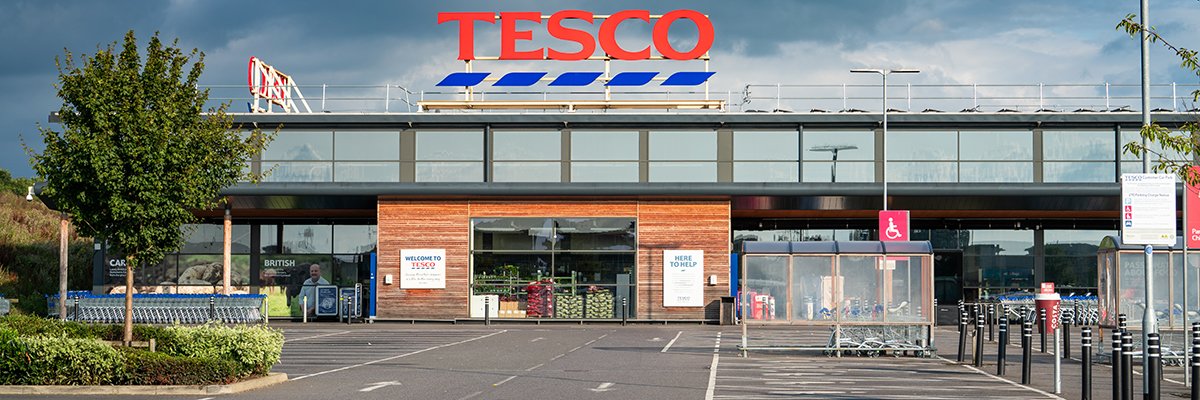Have you heard people say that “all Linux is the same?” Are you not sure how two Linux distributions that can share a software base can be different? Let me explain what is going on and why developers have made so many distros.
There is a popular idea that all Linux distributions are essentially the same, and that you can start with one Distro and possibly adjust it enough to work and feel like another Distro. Although theoretically that is possible, it would require practical weeks of technical problem solving – and even then you can fail! Why would you bring yourself because of these problems if someone else probably did the work for you and offer it for free – as a new Distro? As such, all Distros are from a practical position not the same. This is how they differ from each other and why these differences matter.
The choice of desktop environment
Endeavouros installer picking desktop environment.
I have always said that the choice of desktop environment (de) matters more matters than the distribution itself, at least for most people. The de Dictates what you deal with every day – the panels, the menus, the system drawer and the overall atmosphere. Look to put this in perspective to the Ubuntu family. You have standard Ubuntu, which comes with gnome; Kubuntu, who exchanges that for KDE Plasma; Xubuntu, who uses XFCE; And Lubuntu, who runs LXQT. Under the hood, all this district use the same Ubuntu core, but the different desktop environments make the overall user experience unique for each.
Now you might wonder – what not only a Distro chooses and installs which one you want on top? In theory that is possible, but in practice it is a recipe for problems. The replacement of an already installed the by another, or life with two different DES, often leads to technical problems. Solving problems or solving these errors can eat a lot of time – time that most Linux users, especially newcomers, cannot or simply do not want to invest.
I even tried to install KDE plasma on Ubuntu and it was an absolute disaster. It is much smoother and clear to use a distribution that is designed around a certain desktop environment, where everything feels related and works out of the box!
In general, there may be a developer who holds a Distro from a technical point of view, but does not like the graphic side or interface. So they change the standard for something else and upload the result to the internet, creating a brand new user experience and a brand new Distro. As a result, we do not have to worry about the technical setup and we simply use a Distro that is specifically designed with the base and the of our choice.
Some distributions such as Manjaro or Linux Mint support several des. This eliminates the need to change district to use another, but that is not yet the case for all Distros.
Stability versus cutting edge

I love them or hates them, routine updates are the lifeline of each operating system. They keep your system fresh with new functions, bug fixes and security patches. The biggest problem with OS updates is that they can arrive unexpectedly and disrupt your routine workflow-a-known trauma among Windows users.
Fortunately, Linux gives you complete control over how often you want these updates. Do you want new functions and software as soon as they are released? Or would you rather get a large series of updates every six months or every six months? You have this choice with Linux.
Rolling release distributions such as Arch Linux or OpenSuse Tumbleweed Ship updates for all your apps and system tools as soon as they are made available by the developers. You can set a weekly or biweekly routine to install them and keep your system fresh and minty.
On the other hand, you have fixed or stable release distributions, which releases important systemupgrades after a fixed time. New Fedora versions, for example, fall every six months, while Ubuntu LTS (long -term support) releases fall every two years. I should mention that these distributions will immediately push bug fixes or security patches – it is only the most important function updates you have to wait.
Now the reason is that stable release distributions wait longer that they test all system components to guarantee optimum system stability. This does not mean that Distros of the rolling release is unstable. In fact, I drive Garuda Linux every day, a arched roller-based rolease-Distro, and it is more than reliable enough for daily use. However, stable release distribution is just a bit more Stable making them ideal for production-ready environments. Moreover, the fact that you do not have to worry about the entire system that changes for six months or two years is the ideal for projects where you need a system to stay consistent for a long time.
While I about this subject, I also have to talk about the support window. Stable releases have been defined lifetime-fedora for approximately 13 months, Ubuntu Non-LTS releases for nine months and LTS releases for five years-where you have to upgrade the system. With rolling releases, however, there is no set support window and a continuous current updates will come to you!
Software availability

Linux Mint Software Store Mintinstaller.
The choice of Linux -Distro can influence which apps and tools are easily available for you. This does not mean that only certain district can use certain apps. In fact, regardless of your Distro, you can get almost every app or tool you need – it’s just a matter of how easy the process will be. Some apps are more easily available on certain distributions than others.
For example, Fedora leans heavily in open source, so the official repository is full of open-source tools and developer-friendly software, and it omits all closed-source options as standard. If you need your own apps, you have to switch on an external repository such as RPM merger, which is not difficult, but you have to jump through an extra hoop.
Ubuntu, on the other hand, makes it easier to get closed-source applications, either from the official repos or via Snap packages. Many people (including me), however, prefer flat packs above Snaps, so they have to install flatuit on Ubuntu, which is a different step between you and the app you want to use. Linux Mint uses standard flatpacks instead of snaps, making it a better option for me and people with similar preferences.
This difference in software availability is often found in the central problem that the Distro tries to resolve and the underlying philosophy of the development team. Some prefers open-source software on philosophical grounds, while others are open to their own code. Some build a Distro for general use, while others optimize it for specific use cases. This preference releases the scales, making some apps easier to install than others, depending on the Distro you use.
Steering support and hardware compatibility
Sometimes installing Linux on certain hardware can become a bit unpredictable. A distribution can work flawlessly on your machine, but if your friend tries it on his laptop or desktop, it cannot cooperate. More often than not, the perpetrator is support for the director.
Ubuntu generally has excellent support from the Box director, which is why (and his derivatives) have built up a solid reputation for working on a wide range of hardware. This is also a big reason why many people recommend Ubuntu for beginners – it just worksWithout much problem solution.
These problems with the driver are most common in laptops, especially with niche Bluetooth or Wi-Fi modules. However, the biggest bottleneck – many in both laptops and desktops – is a tendency to be drivers for Nvidia -Graphic cards. You need the patented NVIDIA driver for optimum performance, but not all distributions include this out-of-the-box. This can even make installing the Distro problematic because you can experience graphic problems during installation. For example, my system has an RTX 3060 GPU and I came across many problems that Fedora tried to install. But both Ubuntu and Garuda Linux have installed the gaming edition well because they include their own Nvidia drivers from the box.
Now some distributions go beyond just inclusion of the Driver-Ze peaks at kernel level and bundle (or leaving) specific tools to optimize the compatibility with certain hardware. For example, Cachyos is designed for advanced, high-performance hardware, while Xubuntu and Linux Lite are all about breathing new life in aging machines with limited resources.
Pre -configured for specific workflows

Lucas Gouveia/How-To Geek
The diversity of Linux distributions is not only limited to the filters of appearance, software and system compatibility, but extends to your specific use cases and workflows. These are districts that are specifically configured with all apps and system -specific adjustments that you may want, so that you can simply dive and start working.
For example, if you like cyber security, Kali Linux is provided with a special system that is optimized for penests and ethical hacking. If you are a maker of content, Ubuntu Studio is full of all audio and video editing aids that you need. Garuda Dragonized Gaming Edition, what I use is one of the best gaming distribution shipping with all gaming apps and optimization from the box.
That said, sometimes it’s less about what you want to do, and more about how you want to do it. Perhaps you are used to Windows and you want a user experience that mimics that of Windows 7 or XP, in which case you have options such as Linux Mint and Zorin Os. While, if you look a little more like macOS, you can go for elementary operating system or Pearos.
Every Linux -Distro is different for a reason and now you the How And WhyYou can concentrate on finding the one who really suits you instead of hunting a mythical best Distro.









